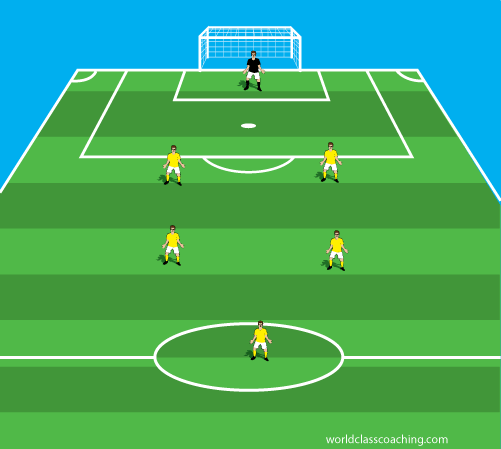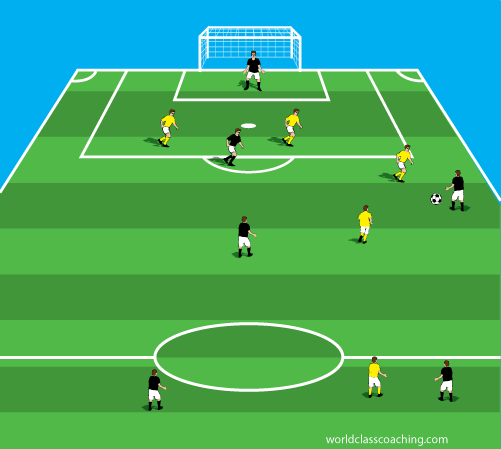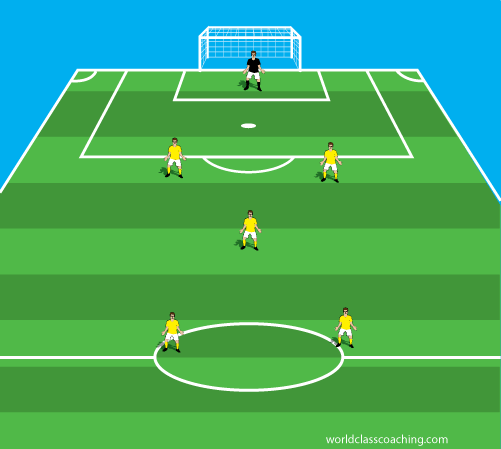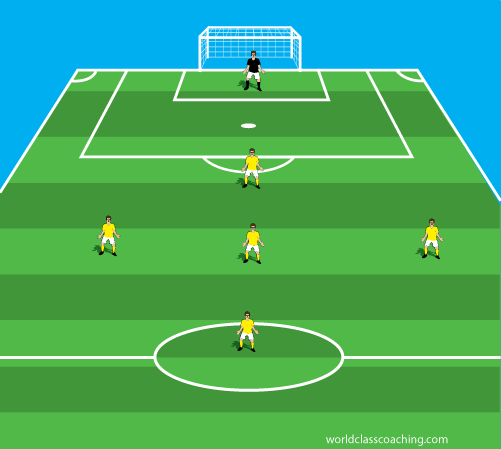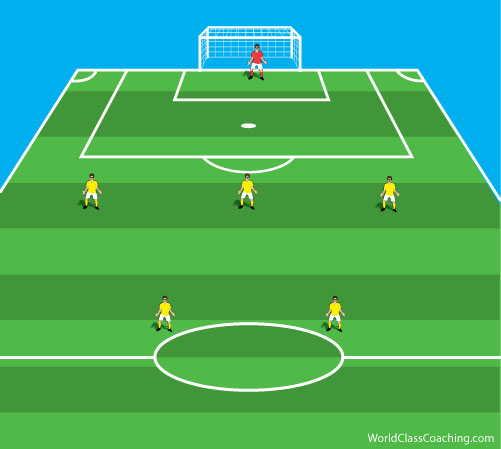There are many books and dvds that discuss the different formations that can be played in the 11v11 game but I haven't seen that much discussion about how coaches organize their players when playing 6v6 or 8v8. While there are some areas that use 7v7 and 9v9, the former are the two most common formats for young players in United States.
Players that are U9 and U10 generally play 6v6 I'll focus on this post. I'll discuss the 8v8 format that U11 and U12 players progress in next week's blog.
It could be that this subject isn't discussed often because the focus at this age is on players developing their skills. This is true but they also need to learn how to play the game and understand the responsibilities of each position.
I keep it very simple most of the time with the 6v6 format. My teams play two defenders, two midfielders and a forward. This formation requires the players to learn to 'slide' from one side of the field to the other.
When defending, the defender on the ball side of the field moves to pressure while the weak side defender must slide toward the middle of the field and also drop back to cover the pressuring defender. The midfielders come back to help with the ball back. The ball side midfielder helps pressure the ball while the back side midfielder covers the back side becoming a third defender.
On the offensive side, the forward learns that they need to move to the ball side of the field and find a clear path to receive the ball. The midfielders learn to support the forward by making wide runs when attacking. This is especially true for the weak side midfielder. It's common to see this player get sucked into the middle in search of the ball. This makes it much easier for the defending team because there is less space to defend.
The defenders are encouraged to move forward and support the midfielders, this make the field smaller for the other team and gives the defenders a chance to get involved in the attack. I want the defenders to dribble forward when they pick up the ball near the halfway line if they have space in front of them. We routinely have defenders score goals because of this attacking attitude.
[wpsharely id="6889"][/wpsharely]This alignment gives the team a constant presence in the middle but it requires the two forwards to come back to cover the flanks or for the defenders to come forward to pick up wide midfielders leaving the other defender 1v1 with the forward.
When I guilded a coaches tour to Holland a couple of years ago we watched a PSV training session where they were playing 6v6 and the players used a 1-3-1 formation. The center midfielder was responsible for getting back to cover the defender when his team lost the ball. The other players had similar roles to the 2-2-1 but this was a unique approach that I had not seen before.
This formation would definitely add more width to the game but playing with one true defender against at least one forward would put a lot of pressure on this player. I suppose it would be good for teaching 1v1 defending and the importance of recovery runs but it would give me a stomach ache :-).
A final formation I've used is a 3-2. The key here is to make sure your defenders make runs to support the forwards. This has worked well when we have been outmatched physically or technically. Giving more players defensive roles helps make it tougher for the other team since we're able to cover the width of the field.
What are other formations that you've used with the 6v6 format and how have they worked to help the players learn the game?

